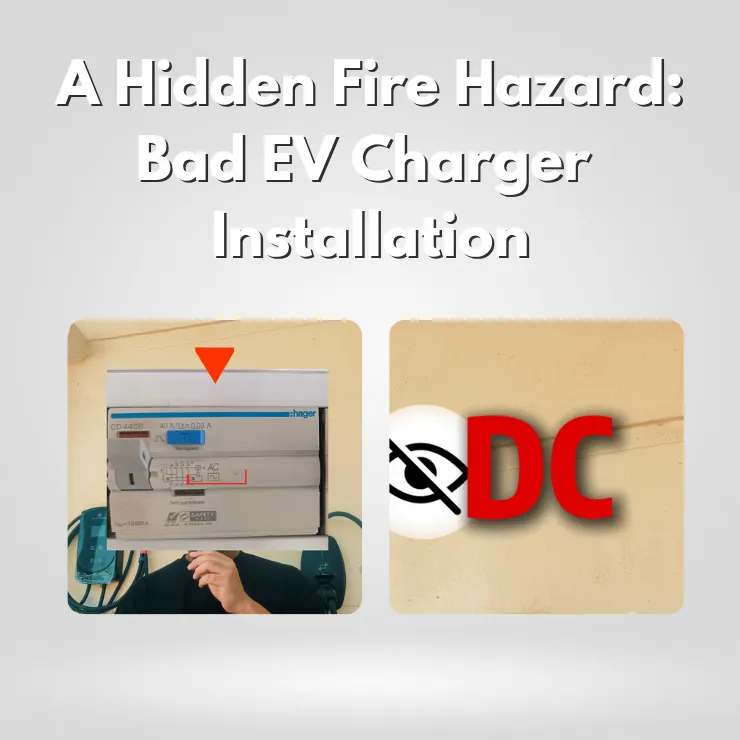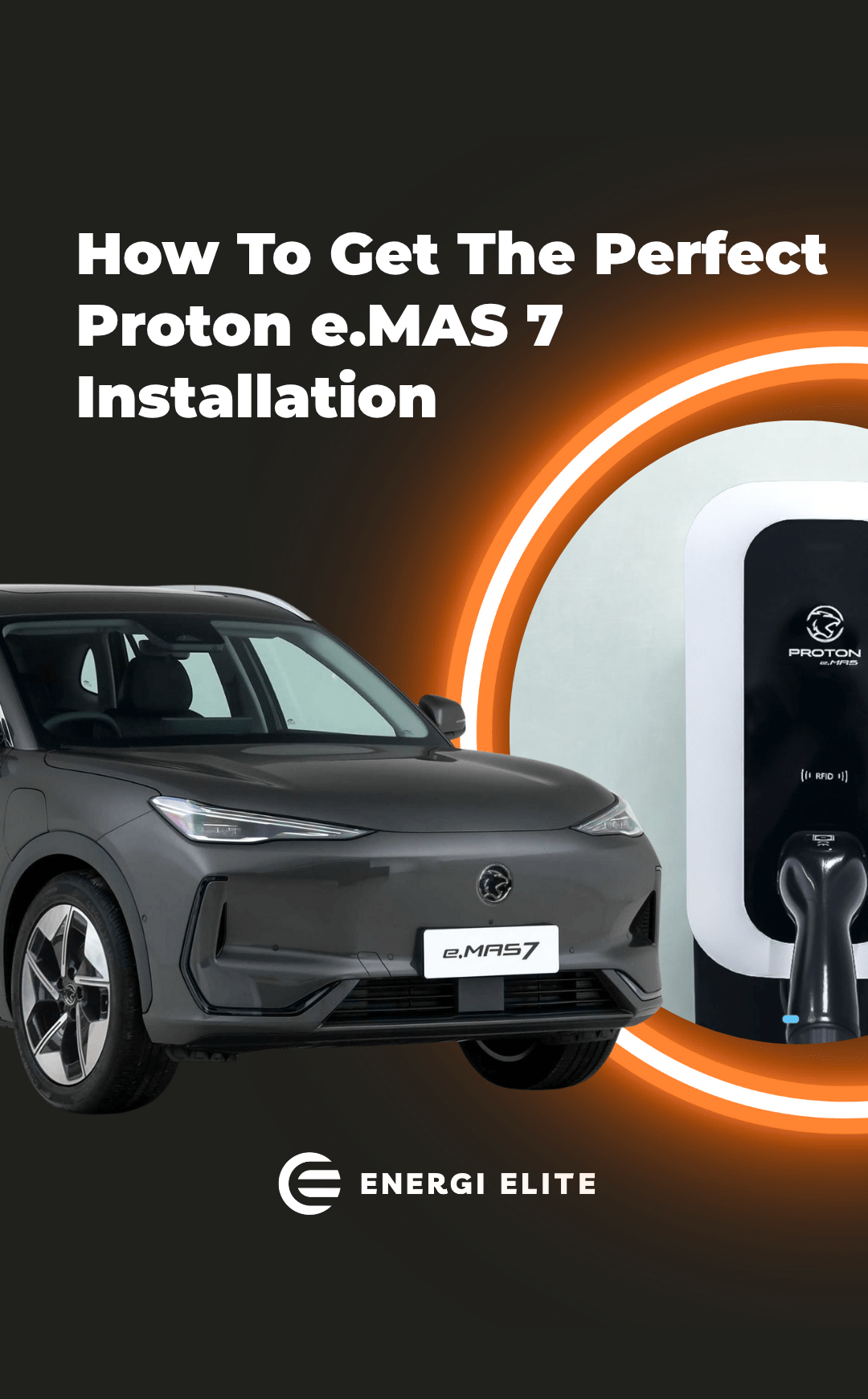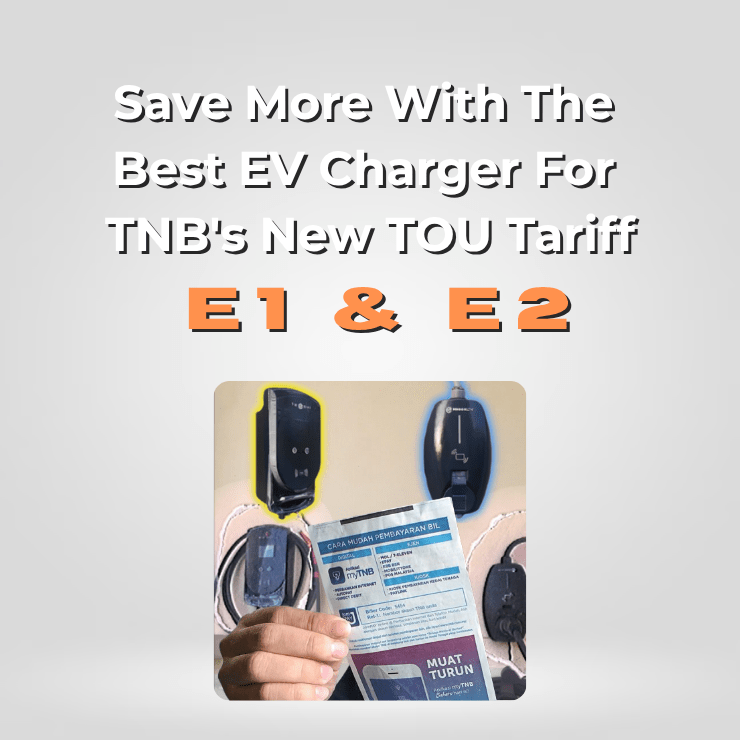Your Bad EV Charger Installation Is A Hidden Fire Hazard.

Choose your installer carefully as it may have an impact on your user experience using an EV Charger. Lurking behind the distribution box of your home leads to an overlooked component that could turn your EV investment into a potential nightmare: A bad EV Charger installation.
How to Avoid A Bad EV Charger Installation
The safety of an EV charger installation is determined by the correct specification of protective devices. In this case, a Bad EV Charger Installation was identified, and the issue observed was not a minor oversight but a significant compromise to the safety of the home’s electrical system. Two components were found to have been specified incorrectly:
- The type of RCCB
- The MCB interruption capacity
The RCCB Type: Using Type AC Instead Of Type A
The RCCB is designed to detect leakage of electrical current. In the scenario of an electric vehicle being charged, both AC and DC currents may be present. However, in the Bad EV Charger Installation referenced above, a Type AC RCCB was use. This type is capable of detecting only AC leakage, but not DC or pulsating DC faults. This makes it unsuitable for EV charger applications.
For home EV charging setups, a Type A RCCB is more appropriate, as it is able to detect both AC and pulsating DC leakage currents, thereby offering enhanced protection. Protecting the upstream of your electrical system from the EV Charger towards the Distribution box.
Underrated Interrupt Capacity of The MCB
The role of the MCB is to protect wiring from overloads and surges during short circuits. However, in this Bad EV Charger Installation, the MCB was found to be underspecified, with a breaking capacity of only 4.5 kA as seen in the video. While such a rating may be adequate for lighting circuits, it is not sufficient for high-powered applications such as EV charging.
A minimum breaking capacity of 6 kA is required for the application of EV Charging due to its better rating at handling larger fault current. This ensures that the MCB is capable of safely interrupting fault currents from the grid, which may exceed 4.5 kA.




